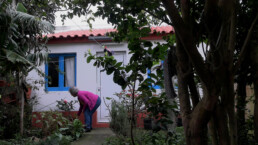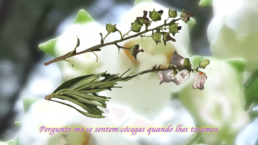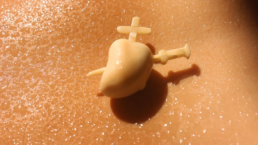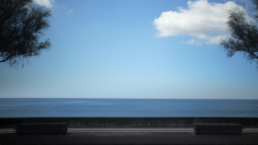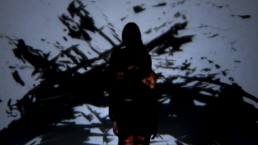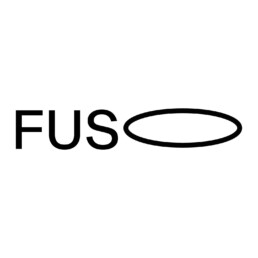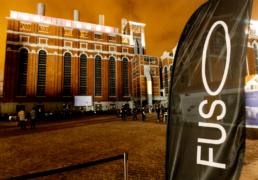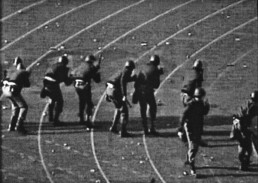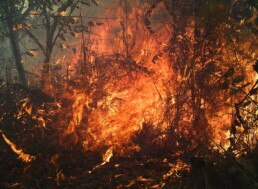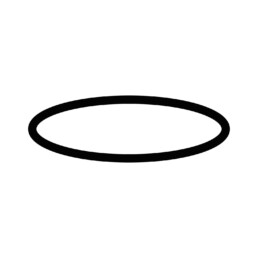FUSO 2025 – 25 a 31 de Agosto
26 Agosto, 18h30
Duplacena 77
Curadoria
Rachel Korman
O FUSO Insular é um programa de residência criativa e uma Mostra de Videoarte dos Açores. Surgiu em 2019, na sequência do FUSO Lisboa. Existia uma lacuna no panorama artístico do Arquipélago dos Açores quanto ao conhecimento e à formação na área da imagem em movimento. Com o intuito de fomentar a criação artística açoriana, desenvolvemos o Laboratório Imagem em Movimento, um espaço/tempo dedicado à criação de obras em vídeo. É um programa de residência cujo propósito é dar oportunidade às pessoas que vivem nos Açores – sejam ou não artistas – e que se interessam pelas artes cinematográficas, de realizarem os seus projetos em vídeo, munindo-as de conteúdos e referências e apoiando-as no desenvolvimento e concretização dos seus trabalhos. Entre encontros teóricos e práticos, estimula-se a reflexão sobre a imagem em movimento como expressão artística transversal a todas as práticas. Os trabalhos que apresentamos nesta edição do FUSO Lisboa foram criados durante o Laboratório Imagem em Movimento de 2024. A realizadora Catarina Mourão foi responsável pela componente teórica da residência e o artista André Laranjinha pelo acompanhamento prático. Durante o verão açoriano, em encontros semanais e num processo colaborativo, os participantes propuseram ideias, criaram guiões, captaram imagens e sons e aventuraram-se por ilhas de edição, para contarem as suas histórias.
Ana Cabral inventaria uma herança emocional em busca do passado que nunca viveu;
As Atelineiras – Bia, Carol, Inês e Xico, criaram um herbário de plantas presentes na paisagem açoriana para confrontar e criticar as categorias dessa mesma flora;
Catarina Fernandes oferece-nos um gesto de amor;
Maria Emanuel Albergaria filma cenas que a seduzem e envolvem, numa reflexão sobre a importância de cultivar e cuidar;
Maria João Sousa dá-nos ver o invisível;
Sandra Medeiros reflete sobre a parte que preferimos não reconhecer em nós próprios;
Willian Fonseca evoca suas origens para falar da condição de imigrante.
Autobiográficas ou ficcionais, estas obras têm no território açoriano um denominador comum.
A Mostra Fuso Insular pode ser vista durante a semana do FUSO (26 a 31 de agosto) das 15h00 às 18h00 no espaço Duplacena 77 (Regueirão dos Anjos, 77A Lisboa).
Catarina Fernandes – AINDA BEM QUE A LUA EXISTE
A história começa há muito tempo atrás, numa outra ilha, quando a filha ainda não tinha nascido e o segredo ficou escondido na praia redonda. Um dia a mãe escreve, a filha lê e tudo muda, menos a lua. O resto, é bálsamo ou gesto de amor de uma filha que gosta de cantar com a mãe.
Atelineiras – AO REDOR
Num herbário construído pelo coletivo Atelineiras, as artistas focam-se em recolher plantas presentes na paisagem açoriana. Confrontando a categorização de “invasora” e “endémica” e criticando as noções de diversidade da flora procuram mostrar que, tal como nós, aquela também é a sua casa.
Ana Cabral – DE MARFIM COM AMOR
Através de memórias fragmentadas e objetos herdados de avós que nunca conheceu, De Marfim, com Amor inventaria uma herança emocional que funde o real com um imaginário criado para dar sentido a ausências e tentar tocar num passado que nunca se viveu. De que forma estão presentes aqueles que nunca conhecemos?
Willian Fonseca – Migratórios
Migratórios aborda alguns fragmentos dentro de muitos que envolve processo de migrações e travessias atlânticas, resgatando memórias que as águas carregam e formas de se relacionar a partir dessas confluências.
Ana Cabral – Movimento. Dim∑nsão. Impacto.
E se os rastros do movimento fossem visíveis? Observação de movimentos que oscilam a matéria em padrões comportamentais que perduram no tempo e no espaço, criando impactos em todas as dimensões.
Sandra Medeiros – O LADO SOMBRA
O lado sombra representa a parte que preferimos não reconhecer em nós próprios, o que reprimimos ou negamos no nosso inconsciente, que é incompatível com o nosso padrão social, como os nossos medos, instintos, impulsos primitivos e traços menos desejáveis.
Maria Emanuel Albergaria – TUDO ESTÁ EM TUDO
Queria filmar cenas que me seduzem e envolvem: camadas que habitamos, ciclos, transformações, peles, o envelhecimento. Mas também a importância de cuidar e cultivar.
Este filme, assim como nos sonhos, levou-me a revisitar memórias, alegrias e tristezas, e a perspetivar futuros. Sobretudo, fez emergir em mim o fascínio pelas formas vegetais.
FUSO 2025 – August 26th to 31st
August 26th, 6.30pm
Duplacena 77
Curator
Rachel Korman
FUSO Insular is a creative residency program and a video art showcase in the Azores. It began in 2019, following on from FUSO Lisboa. There was a gap in the artistic scene of the Azores archipelago in terms of knowledge and training in the area of the moving image. With the aim of fostering artistic creation in the Azores, we developed the Moving Image Laboratory, a space/time dedicated to the creation of video works. It is a residency program whose purpose is to give people who live in the Azores – whether they are artists or not – and who are interested in the cinematographic arts, the opportunity to create their own video projects, providing them with content and references and supporting them in the development and realization of their work. Between theoretical and practical meetings, it encourages reflection on the moving image as an artistic expression that cuts across all practices.
The works presented in this edition of FUSO were created during last year’s Moving Image Laboratory. Catarina Mourão, filmmaker, was responsible for the theoretical component and the artist André Laranjinha for the practical accompaniment. During the Azorean summer, in weekly meetings and in a collaborative process, the participants proposed ideas, created scripts, captured images and sounds and ventured into editing islands to tell their stories.
Ana Cabral invents an emotional inheritance in search of a past that she never lived; The Atelineiras – Bia, Carol, Inês and Xico, created an herbarium of autochthonous plants of the Azorean landscape to confront and question the notions of diversity in this flora; Catarina Fernandes offers us a gesture of love; Maria Emanuel Albergaria films seducing and compelling scenes that led her to a reflection on the importance of growing and caring; Maria João Sousa makes the invisible visible; Sandra Medeiros reflects on the traits we have and do not want to acknowledge; Willian Fonseca evokes his origins to address the situation of migrants.
Whether autobiographical or fictional, these works have the Azorean territory as their common denominator.
The Azorean Video Art Exhibition can be seen during FUSO week (August 26 to 31) from 3pm to 6pm at Duplacena 77 (Regueirão dos Anjos, 77A Lisboa).
Catarina Fernandes – HOW NICE TO HAVE THE MOON
The story begins long ago, on another island, when the daughter was not yet born and the secret lay hidden in the round beach. One day the mother writes, the daughter reads and everything changes except for the moon. The rest is a balm, or a gesture of love from a daughter who likes to sing with her mother.
Atelineiras – AROUND US
The Atelineiras collective built an herbarium dedicated to show the plants that the collective has been gathering in the Azorean landscape. Confronting the categorization of “invasive” and “endemic”, they question these notions of diversity in flora, with the goal of showing that, like us, the Azores is also their home.
Ana Cabral – In Ivory, with Love
From fragments of memories and objects inherited from grandparents she never knew, In Ivory, with Love the artist invents an emotional heritage that merges the real with an imaginary created to give meaning to absences and to try to evoke a past that she never lived. How can those we never met be present in us?
Willian Fonseca – Migrants
Migrants bring together some fragments — within the many — of processes of migrations and Atlantic crossings. The work rescues memories that the waters carry, memories that then interlock forming images that are formed by those fragments.
Maria João Sousa – Movement. Dim∑nsion. Impact.
What if the traces of movement were visible? Observation of movements which mold matter in behavioral patterns that persist in time and space, creating impacts in all the dimensions.
Sandra Medeiros – The Shadow Side
The shadow, in analytical psychology, represents what we prefer not to recognize in ourselves, what we repress or deny in our unconscious aspects of the personality that are incompatible with our social standard, such as our fears, instincts, primitive impulses and less desirable traits.
Maria Emanuel Albergaria – Everything is Within Itself
I wanted to shoot scenes that seduce and involve me: layers we inhabit, cycles, transformations, skins, aging. But also the importance of caring and cultivating. This film, like in my dreams, led me to revisit memories, joys and sorrows, and to look towards the future. And, above all, it seduced me to the world of the forms of the vegetation.
